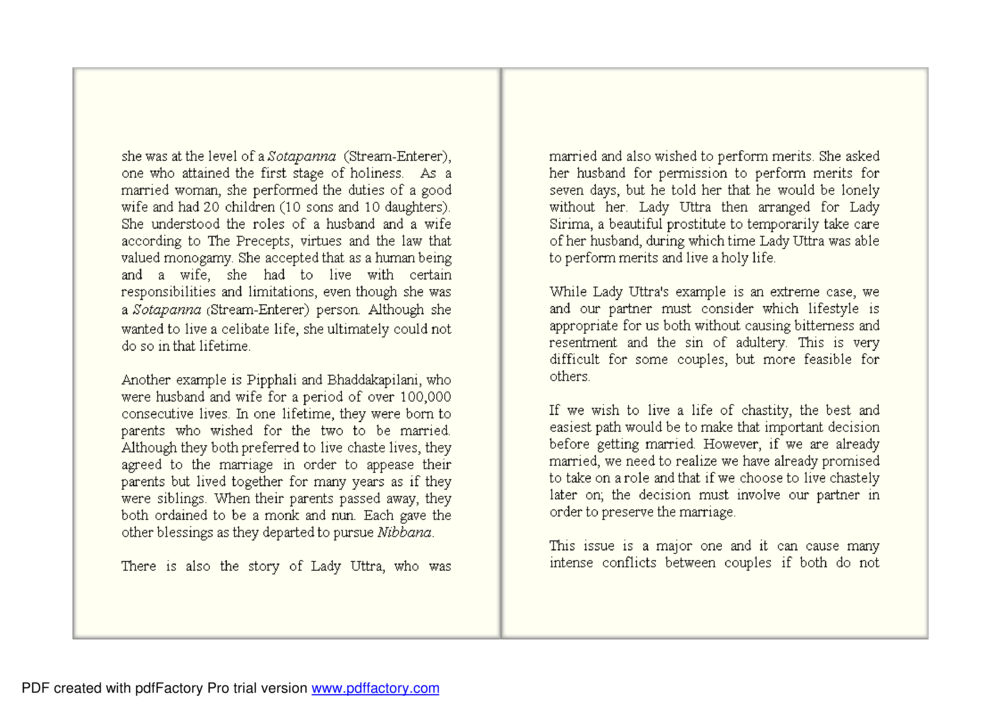Navigating Chastity in Marriage : หน้า 31/62
Lovely Love : หน้า 31/62 Exploring the balance between marital responsibilities and the desire for chastity in relationships.
0 ครั้ง

สรุปเนื้อหา
This text discusses the complexities of living a chaste life while fulfilling marital duties. It highlights the experiences of notable figures like a Sotapanna woman, Pipphali and Bhaddakapilani, and Lady Uttra, who navigated their desires for spiritual paths amidst societal and marital expectations. Through their stories, it emphasizes the importance of mutual understanding between partners regarding lifestyle choices. The narrative underscores that if one seeks a chaste life, discussing this with their spouse is crucial, particularly after committing to marriage. The challenge of maintaining harmony without causing resentment or conflict is a central theme, portraying the difficulty but also the necessity of alignment in marital roles and aspirations. It advocates for making conscious decisions about chastity before marriage or collaboratively navigating these choices afterward to avoid conflict and upholding the sanctity of the relationship. For more insights, visit dmc.tv.
หัวข้อประเด็น
-Chastity in marriage
-Marital responsibilities
-Buddhist principles
-Stream-Enterer concept
-Couples' conflict resolution






























































